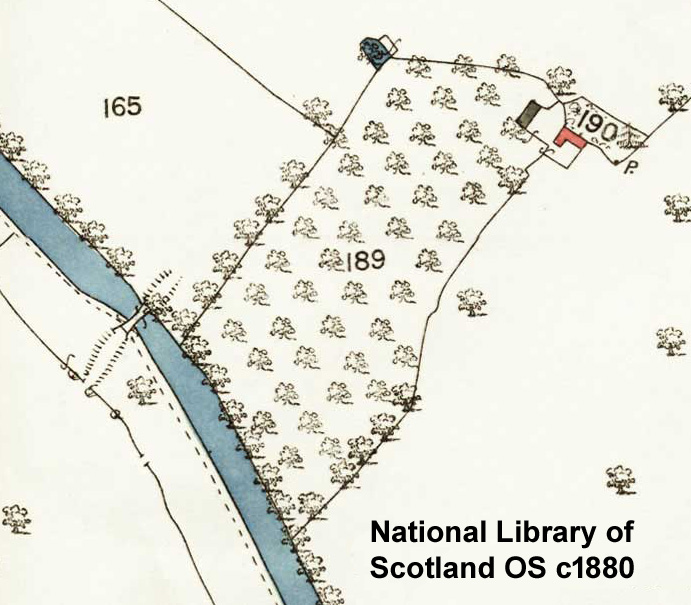Hugh Conway-Jones provides historical notes relating to the orchard east of Occupation Bridge which is being cared for as part of the canal restoration project.


What is now called Pockett’s Orchard was formerly part of the Parklands estate centered on a big house and farm up the hill on the outskirts of the village of Whitminster. (For more about the estate, visit Parklands House and Farm). In the 1837 Tithe Survey, the orchard was recorded as Wellsprings Orchard with an area of 3a 0r 26p. A pond by the north-west corner was presumably the site of the spring referred to in the name. It appears that the pond was to provide drinking water for animals in the neighbouring field rather than for the benefit of the orchard.
Judging from the surviving trees, the orchard was mostly planted with varieties of apples and pears that were intended for making cider and perry. The trees were spaced at intervals of about ten yards, and there could have been up to 70 trees if all of the positions were taken. When the stock of the estate was put up for auction in 1861, one of the lots was 2000 gallons of cider and perry.
At the north-east corner of the orchard was a small enclosure around a cesspit that received effluent from the house and farm above, and this had an overflow emerging on the edge of the orchard further down the hillside. Whether this was good for the orchard is not known, but the ground did benefit occasionally from being covered with silt dredged from the canal, for which a retaining bank was formed to prevent it all draining back into the canal.
In the second half of the nineteenth century, the 70 acre Parklands estate was owned by a junior member of a land-owning family who was keen to play the role of the country gentleman. After local school children were entertained at annual treats with games and refreshments, each child was given some goodies to take home – often including an apple from the orchard.
The quiet world of the orchard was rudely disturbed one day in 1870 when the Berkeley hounds came racing down the hill in full cry, followed by Lord Fitzharding and a ‘numerous field’. The hunt crossed the nearby bridge over the canal and continued across the valley, but they did not make a kill as the fox went to ground near Frampton-on-Severn.
Early in the twentieth century, there was evidently a need for more water for the house, and the then owner set up a windpump on the west side of the orchard and paid an annual rent to the Stroudwater Company for a pipe to draw water from the canal. By this time, the farm part of the estate was in the hands of farmer George Pockett, and his son Robert bought the farm in 1943. The orchard was still producing fruit in the 1960s, when at harvest time a long pole was used to shake the branches, and the whole family was expected to join in collecting the fallen fruit. This was taken by trailer up to the farm, where it was collected by one of the big drink producers.
Present condition of orchard from Peter Savage, Gloucestershire Wildlife Trust.
Estate sale in 1861 from Stroud Journal 6 Apr 1861 p5.
Cess pit and overflow from deeds in C/DC/F/37/1.
Distribution of silt dredged from the canal from D1180/9/5 p437.
Events in the grounds from various Stroud newspapers.
Visit from the Berkeley hunt from Stroud News 18 Mar 1870.
Water extracted from the canal from D1180/1/8 p120 and c1920 OS map.
Pockett family from C/DC/F/37/1, diectories and the memories of Richard Pockett.